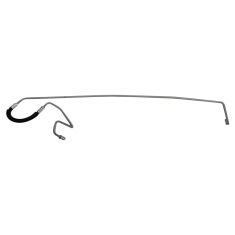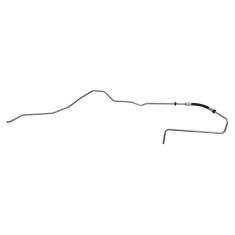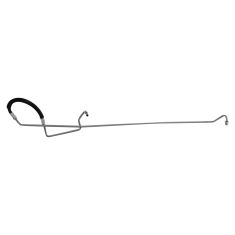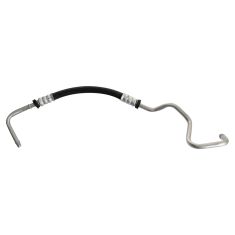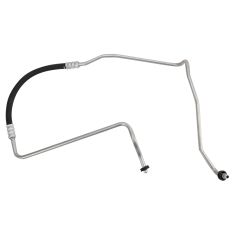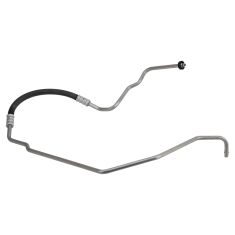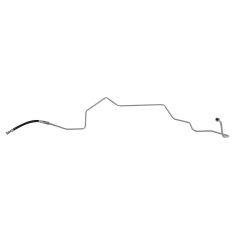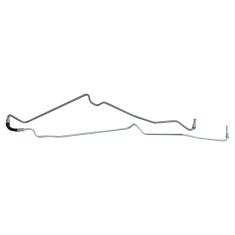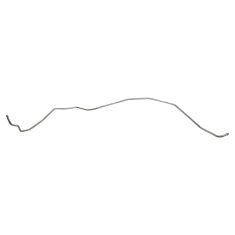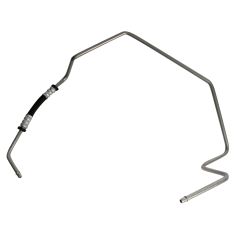Oil Cooler & Lines - Transmission
-
-
- Air Deflectors & Valance Panels
- Battery Trays & Related
- Body Panels
- Bumpers & Related - Front & Rear
- Convertible Tops, Soft Tops, & Parts
- Decal & Stripe Kits
- Emblems & Nameplates
- Engine Compartment Trim
- Frame Parts & Bushings
- Fuel Door Parts
- Fuel Tank Filler Neck
- Grille
- Header Panel
- Hood & Hatch Lift Supports
- Hood Latch & Catch Brackets
- Hood Release Cable
- Jack Pads
- Radiator Supports
- Rust Repair Panels
- Splash Shields & Fender Liners
- Tailgate Cables
- Tailgate Hinges & Related
- Weatherstripping
-
- Car Covers
- Exterior Lighting
- Exterior Parts & Accessories
- Exterior Safety & Security
- Exterior Storage
- Fender Flares
- License Plate Brackets & Frames
- Mud Flaps & Splash Guards
- Nerf Bars, Side Steps, Running Boards
- Radio Antenna
- Rain Deflectors
- Roll Bars, Light Bars, & Related
- Roof Rack
- Skid Plates
- Spare Tire Carriers & Related
- Spare Tire Covers
- Tire Care
- Tonneau Covers
- Tow Hooks & D-Shackles
- Towing Accessories
- Trailer Hitch & Components
-
- Accelerator Pedal Pad
- Auto Carpet
- Brake Pedal Pad
- Clutch Pedal Pad
- Console Parts
- Dash Pad Cover
- Dash Vents
- Floor Mats & Liners
- Horns & Horn Parts
- Interior Parts & Accessories
- Mirror - Interior Rear View
- Seat Cover and Sets
- Seat Heater Kits
- Seat Parts and Accessories
- Sun Visors & Related
- Trunk & Cargo Parts
-
- Accelerator Pedals & Sensors
- Alarms, Control Modules, & Remote Start
- Cruise Control Switch & Lever
- Electrical Parts
- Hazard Switch
- Ignition Key Lock Cylinder
- Ignition Switch
- Keyless Entry Remote & Related
- Neutral Safety Switch
- Parking Assist Cameras & Monitors
- Power Mirror Switch
- Power Seat Switches
- Power Window Switch
- Radio, Navigation, Entertainment
- Reverse Light Switch
- Trunk Release & Lock Solenoids
- Turn Signal Switches and Levers
- Windshield Wiper Switch
-
- Idler Arm
- Pitman Arm
- Power Steering Hoses
- Power Steering Oil Cooler
- Power Steering Pressure Sensor
- Power Steering Pump
- Power Steering Pump Cooling Fan
- Power Steering Pump Pulley
- Power Steering Pump Reservoir
- Steering Dampers
- Steering Knuckles and Spindles
- Steering Rack and Gear Boxes
- Steering Shafts & Couplers
- Steering Wheels & Column Parts
- Tie Rods & Adjusting Sleeves
-
-
-
69
7
10
10
-
Notify When Available
Replaces Ford Outlet To Transmission (Front) Automatic Transmission Oil Cooler Hose Assembly TRQ ECA62371
Brand: TRQ - ECA62371$54.95Save 30%List $78.95 Save $24.00Replaces Ford Outlet To Transmission (Front) Automatic Transmission Oil Cooler Hose Assembly TRQ ECA62371
Brand: TRQ - ECA62371$54.95Save 30%List $78.95 Save $24.00 -
Notify When Available$77.95Save 45%List $140.95 Save $63.00Brand: TRQ - ECA62362$77.95Save 45%List $140.95 Save $63.00
-
Notify When Available
Replaces Ford Passenger Side Inlet from Radiator Automatic Transmission Oil Cooler Hose Assembly TRQ ECA62373
Brand: TRQ - ECA62373$54.95Save 34%List $82.95 Save $28.00Replaces Ford Passenger Side Inlet from Radiator Automatic Transmission Oil Cooler Hose Assembly TRQ ECA62373
Brand: TRQ - ECA62373$54.95Save 34%List $82.95 Save $28.00 -
Notify When Available$34.95Save 30%List $49.95 Save $15.00Brand: TRQ - ECA62360$34.95Save 30%List $49.95 Save $15.00
-
Notify When Available
Replaces Buick Pontiac Automatic Transmission Oil Cooler Hose Assembly TRQ ECA62353
Brand: TRQ - ECA62353$40.95Save 32%List $59.95 Save $19.00Brand: TRQ - ECA62353$40.95Save 32%List $59.95 Save $19.00 -
Notify When Available
Replaces Chevrolet Buick from Upper Radiator to Transmission Automatic Transmission Oil Cooler Hose Assembly TRQ ECA62394
Brand: TRQ - ECA62394$39.95Save 36%List $61.95 Save $22.00Brand: TRQ - ECA62394$39.95Save 36%List $61.95 Save $22.00 -
Notify When Available
Replaces Dodge Ram 1500 2500 3500 Auxiliary Cooler Inlet (Upper) Automatic Transmission Oil Cooler Hose Assembly TRQ ECA62386
Brand: TRQ - ECA62386$99.95Save 38%List $159.95 Save $60.00Brand: TRQ - ECA62386$99.95Save 38%List $159.95 Save $60.00 -
Notify When Available
Replaces Ford Expedition F150 F250 Automatic Transmission Oil Cooler Hose Assembly TRQ ECA62383
Brand: TRQ - ECA62383$43.95Save 48%List $84.95 Save $41.00Brand: TRQ - ECA62383$43.95Save 48%List $84.95 Save $41.00 -
Notify When Available
Replaces Chevrolet GMC Olds Automatic Transmission Oil Cooler Hose Assembly TRQ ECA62376
Brand: TRQ - ECA62376$69.95Save 49%List $135.95 Save $66.00Brand: TRQ - ECA62376$69.95Save 49%List $135.95 Save $66.00 -
Notify When Available
Replaces Chevrolet GMC Cadillac Automatic Transmission Oil Cooler Hose Assembly TRQ ECA62374
Brand: TRQ - ECA62374$43.95Save 32%List $64.95 Save $21.00Brand: TRQ - ECA62374$43.95Save 32%List $64.95 Save $21.00
loading...
Choose the Make of Your Vehicle
